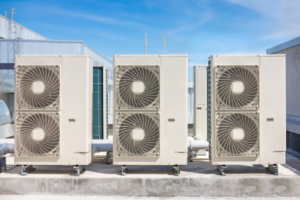Studies suggest that the effects of indoor air quality aren’t just physical health issues but may also affect our ability to think.
During the winter months of 2021 and again beginning in September of this year, indoor air quality has been searched on Google three times more than any other time over the last ten years. Until the COVID-19 pandemic, most people didn’t think about indoor air very much, if at all.
The EPA reports that Americans spend approximately 90 percent of their time indoors, where the concentrations of some pollutants are often 2 to 5 times higher than typical outdoor concentrations. Modern commercial construction means that buildings are airtight and energy-efficient. It also means that air pollutants can become trapped indoors without adequate mechanical ventilation.
While many specific pollutants have been clearly confirmed to cause damaging health effects, a New York Times article titled, Is Conference Room Air Making You Dumber, suggests that there may be pollutants with more detrimental effects to the mind, rather than the body.
The article described a study conducted by William Fisk, a mechanical engineer at Lawrence Berkeley National Laboratory, where he and his colleagues placed people in rooms with varying levels of carbon dioxide. Participants took a problem-solving test that measured real-world productivity and decision-making skills. The higher the carbon dioxide, the worse the test-takers did.
Because increasing the ventilation rate in schools has proven to raise children’s scores on tests and speed at tasks and reduce absences in many other studies, The Times suggested the classroom findings could be used to inform decisions for the confined conference room spaces.
A different study led by Joseph Allen at the Harvard T.H. Chan School of Public Health supports the Times article. The research concluded that the air quality within an office can significantly impact employees’ response times, ability to focus, and productivity. Researchers reported observing impaired cognitive function at concentrations of fine particulate matter and carbon dioxide that are typical within indoor environments.
“The world is rightly focused on COVID-19, and strategies like better ventilation and filtration are key to slowing infectious disease transmission indoors,” said Joseph Allen, associate professor of exposure assessment of science and senior author on the study. “Our research consistently finds that the value proposition of these strategies extends to cognitive function and productivity of workers, making healthy buildings foundational to public health and business strategy moving forward.”
The pandemic has put a spotlight on the quality of indoor air, and it is likely we will see innovative technologies and new regulations emerge. Current COVID risk mitigation guidelines include mask-wearing, de-densification, and strategies focused on building systems and air purification.



